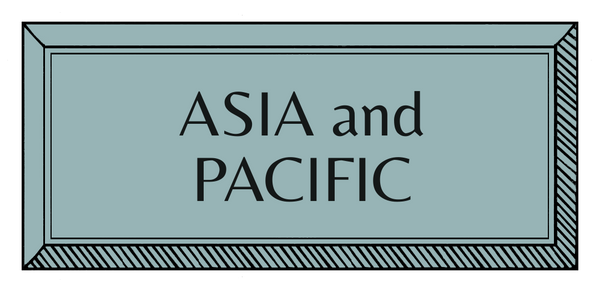MAKERS | ASIA PACIFIC | JAPAN | TEXTILES
Kunihiko Moriguchi | Kimono Painter

Kunihiko Moriguchi at his home, photographed by Nicolas Pages.
Kunihiko Moriguchi was born in 1941 in Kyoto and is the second son of renowned yūzen dyer Kakō Moriguchi. After graduating from Kyoto City University of Arts in 1963, he studied in Paris, where he became the first Japanese recipient of a French government scholarship. Encouraged by artist Balthus, Moriguchi returned to Japan in 1967 to continue his father’s craft. He has since been recognized as a Living National Treasure and received prestigious awards, including the Order of the Rising Sun. His work, inspired by nature and influenced by Pop Art, is housed in major museums worldwide. Nicolas Pages takes us into the world of the “kimono painter" and the Yuzen, the ancestral dyeing technique he practises like a rite, masters as an art and perpetuates like life.
The Yuzen technique was invented by a monk during the Edo period - Edo being the old name for Tokyo between 1600 and 1868 -, at a time when the shogunate forbade the wearing of overly ostentatious clothes, especially those covered in embroidery. This dyeing process enjoyed considerable success as it enabled merchants to offer beautiful fabrics despite the severity of the laws.
First each individual piece of fabric is stretched on thin bamboo roots. The assembly of the pieces is done only at the last moment, which requires the kimono to be planned in detail before the first stage in its making. The contours of the motif are traced out in erasable blue ink (Oabana), which is obtained from a wild flower. Once traced, these lines are covered with a glue made from rice paste, which prevents each applied dye from running over into the neighbouring area.
Another glue (made of soaked soybeans with a type of seaweed) serves to modulate the intensity of each color. Each step is repeated according to the saturation and type of color sought. “At the beginning of my learning, I worked hard until my hands were numb. It was like Yuzen was telling me I wasn’t cut out for it. Yuzen demands that things be done in a certain way. I had to accept, in a sense, that traditional methods exist to chip away your ego.”
“When I meet students, I generally start by telling them: if you are tired or if you know what you want to do with your lives, leave!,” explains the old man in perfect French. In his computer-less home and workshop in central Kyoto, Kunihiko Moriguchi describes the fascination France had for post-war Japan, as it offered a cultural alternative to the enemy’s “American way of life.”

Kunihiko working. © Nicolas Pages
Between 1958 and 1960, there was a steady series of exchanges between the two countries, with the French minister hoping that France would become the representative of “Japanese genius for the whole of the West,” and that it would convey “the essential aspects of Japan’s attitude to the world.”
Kunihiko Moriguchi went to evening classes, learned the language of Molière and took part in a competition organised by the Institut Français in Kyoto. Success! “In August 1963, I took ship, went through the Suez Canal and arrived in Marseille. It was an extraordinary voyage which, unknown to me, was to mark my destiny.”
On the deck of the ship, he met two museum curators. Returning to Paris, the two men remembered the young Japanese freshly enrolled in the Decorative Arts school’s graphic design and architecture course. They sought his help for the scenography. Enthusiastic about history and Japanese painting, Kunihiko could not understand why the most important work (a picture of the Nachi Waterfall by Ike No Taiga, dated 1770) should appear alongside minor studies of gestures and amateur landscapes.
With all the experience of his 22 years, Kunihiko cheekily questioned the curators, and soon discovered that they were working under the direction of someone else, the painter Balthus, commissioned by Malraux to select the works. “Balthus invited me out to Chez Lipp, where he had a serious talk with me. He admitted that his main goal was to shock the French public. Open a debate. Overturn the codes. I understood that an exhibition was nothing more than the expression of a single person.” Kunihiko became a friend of the artist, stayed at Villa Medici, travelled through Tuscany and finished his studies in 1966, three years after his arrival in France, after which the question of returning home came to the fore.

Kunihiko and his apprentice working in his studio. © Nicolas Pages
“Every day, I would think of my father. Should I take over from him? I was lost. The question of succession is very important in Japan.” Six months of thinking followed, during which Kunihiko turned down job offers. He would not be a graphic designer in an agency. “And on 26 December 1966, I flew off without saying goodbye to anyone. Back to tradition!
“My father’s way of painting was so free and joyous that I immediately considered the question of style. Should I copy his early flowers, his waves, his cranes?” The prodigal son could not see himself repeating the same compositions, the same subjects, as he was certain that a pupil could never do better than his teacher until he invented his own universe. The career carved out by his father, the descendant of a family of rice merchants, and not of Yuzen specialists, nevertheless illustrated the possibility of imposing oneself in a traditional art.
“When I asked my father’s advice, he reminded me that he had become a creator. When belonging to a second generation, I could nevertheless be the first generation of my own creation.” This provided a feeling of freedom to Kunihiko. Work began. The child-traveller sorted out his rulers, his setsquares and compasses. “I began to do things that had never been done before in the history of Yuzen.”
A new rhythm imposed itself on the young man’s life. His day began at 7 o’clock with breakfast. As the son of his master, Kunihiko had two pupils at his disposal, the elder of whom was just two years older than himself and had been working for his father for more than eight years. The situation was delicate, but the beginner managed to settle things, even though they understood nothing of his work. “I was doing very graphic works. They used to wonder if I might be a hooligan.”

Kunihiko's finished drawing. © Nicolas Pages
At 6 o’clock the day would end. The studio had to be tidied and cleaned, as the pupils slept here. And then it was time for a bath. “There was only one tub. The master would be first. Then me. Then my mother, my sister, and then the first pupil, the second, third, fourth and, finally, the maid, since it was she who then cleaned the bathroom.”
The painter has never abandoned this patient approach. More than 50 years after having taken over his father’s workshop, Kunihiko Moriguchi produces no more than one piece a month. He now has only one pupil. And even though his doctor recommends he go for an occasional stroll in the woods, where he likes to draw, he knows that “the thinking, the philosophy, everything takes place in the studio.”
Originally, Yuzen was not intended for geometric designs. “I only use rulers for the sketches,” explains the master. “The execution on stretched fabric is done with a raised hand, which makes a geometric construction difficult.” However, it is through this transgression that Moriguchi’s work has become immediately identifiable. “I became the specialist in drawing a line that looks completely straight but isn’t!” Despite their non-figurative nature, Kunihiko considers his motifs to be literary, almost romantic.
Words and images by Nicolas Pages











































